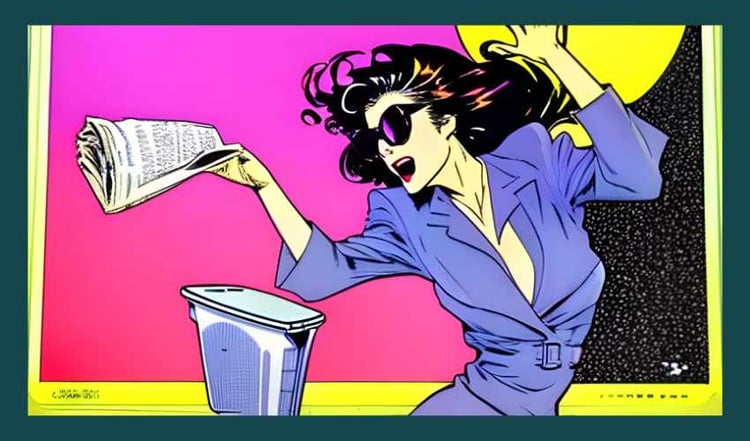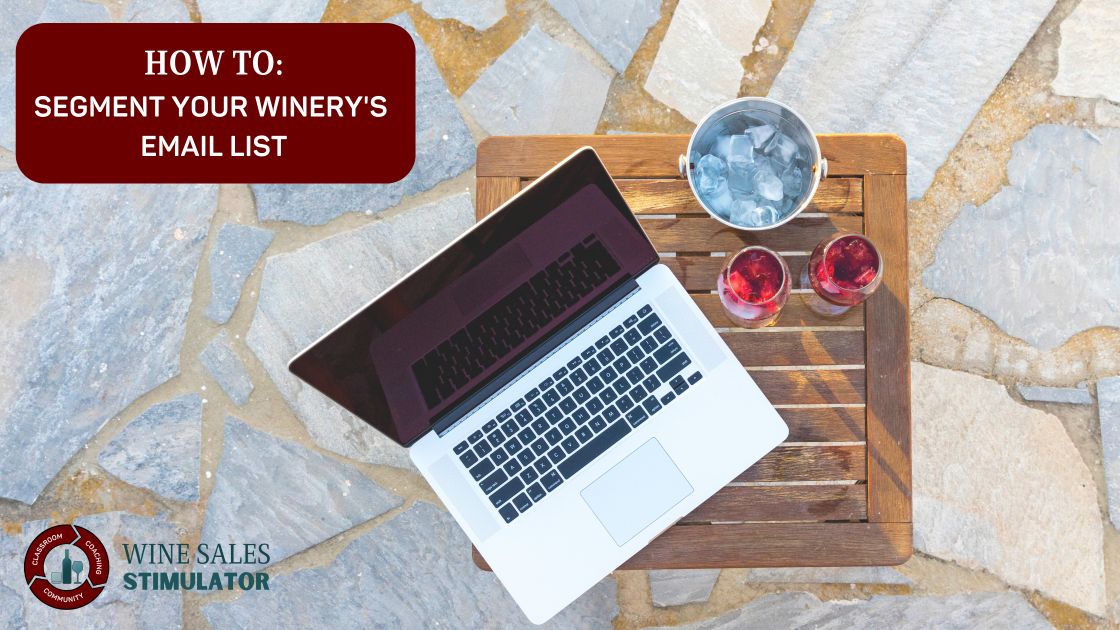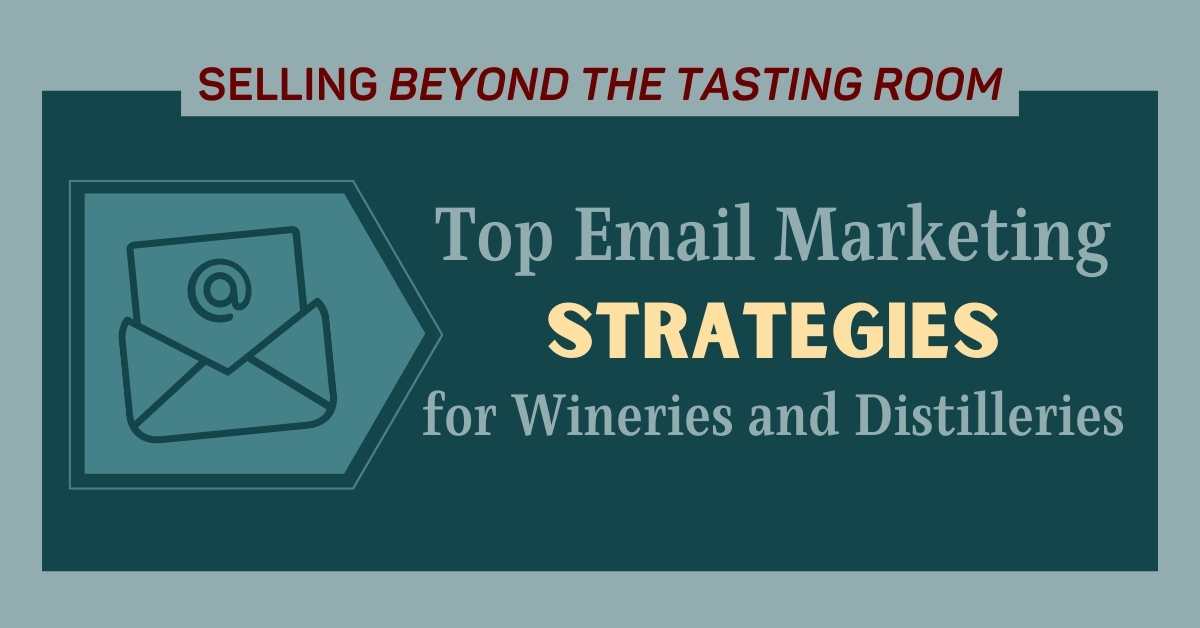How to Segment Your Winery's Email List to Send Targeted Campaigns
When it comes to selling beyond your tasting room, a solid email marketing strategy for wineries is gold! It is not just about how many subscribers...
6 min read
 Ben Salisbury
:
5/23/23 3:30 PM
Ben Salisbury
:
5/23/23 3:30 PM
Table of Contents
Email has been around for a long time but few wineries (and distilleries) know how to fully leverage its potential. Now, a new generation of winery owners are waking up to the idea that email marketing done right has the potential to not only revolutionize the way wine is sold but disrupt the wine distribution system itself.
When most winery owners hear the word, “email,” they think of newsletters or “blasts” sent to their entire list. Or worse: a relentless deluge of email offers that do little except add to the ceaseless barrage of digital clutter that gives email marketing a bad reputation.
 Woman throwing away a newspaper -- this image was generated with AI.
Woman throwing away a newspaper -- this image was generated with AI.
In the early days of email marketing, newsletters were all the rage for wineries. But much has changed in the last 25 years. Not only are there thousands more wine brands on the market, but the capabilities of powerful automated digital marketing tools like Mailchimp, Hubspot, and Klaviyo have transformed the way we communicate directly with consumers and trade buyers.
Creating a lengthy, self-promoting newsletter and sending it to everyone on your email list is the marketing equivalent of standing on the street corner with a sandwich board or putting a giant inflatable stick figure with flailing arms out in front of your winery.
“Modern” email marketing has the power to completely disrupt the wine distribution system all over the world. Consider a typical customer’s journey orchestrated by a masterful email marketing funnel.
1. An ambitious, upwardly mobile sommelier in a popular, upscale restaurant devotes several hours a week to researching and learning about wine trends, dining habits, and the general competitive landscape of the restaurant industry.
2. She opens the Instagram app and starts scoping out the posts of several dozen competitors she follows. This daily habit has consistently yielded valuable insights which allows her to keep her wine list fresh, exciting and up to date.
3. As she scrolls, she sees an Instagram post offering a free guide called, “7 Ways to Reduce Wine Inventory While Keeping Your Wine Assortment on the Leading Edge”. The guide is offered by a small, boutique winery in Paso Robles. She’s so intrigued by the headline, she barely notices the post is sponsored.
4. She clicks the “Learn More” CTA and is taken to a simple, tasteful landing page explaining more details about the guide, who it’s for, and what’s inside. She’s unaware the snippet of code in the landing page’s URL has begun tracking her visit.
5. She fills out the simple form with her name, restaurant name and email address and clicks the button that says, “Grab the Free Guide.” The landing page says by filling out the form, she will be subscribed to their trade-only email list but she is welcome to unsubscribe at any time.
6. A “thank you” confirmation window pops up telling her to check her email for a link to download the free guide. She flips over to her inbox and, sure enough, there is the email. She clicks on it and downloads the guide.
7. A Duchenne smile appears on her face as she quickly peruses the PDF. The document is packed with astute insights and actionable recommendations. She checks to see if she’s already following the winery that created this guide on Instagram. She is not, so she clicks the “Follow” button.
Notice the difference between this way of interacting with potential customers versus the typical sponsored post from a Luddite winery using a “Buy Now” CTA. This way of advertising not only disrespects the customer journey but ignores it completely.
Once engaged, the work of nurturing the young, ambitious sommelier unfolds:
8. Two days after filling out the landing page and downloading the free guide, she receives an automated followup email with the subject line, “More ways to leverage leading-edge wine trends.” She opens the email to find a simple, straightforward, text-only email with a link to another value-packed PDF. She clicks on the link and is pleasantly surprised by the value of the information.
9. Three days later, she receives another automated email with the subject line of “5 restaurant wine lists that are ‘killing it.’” She eagerly clicks the link because so far, everything this small winery has sent her is gold. She thinks to herself, “Wow, this winery sure knows a lot about things a sommelier would want to know.”
10. Three days later, she receives another automated email with the subject line, “3 Wines Your Distributor Will Never Show You.” She immediately calls to mind a recent scuffle with a distributor sales rep where she complained all they ever bring her are wines they need to sell and never the hard-to-get, highly allocated wines she knows HER customers would love. She eagerly opens the email. Her mouth drops open as she reads the following: “3 of our wines recently received very high scores from Wine Enthusiast. We want you to have an opportunity to try these wines before they’re sold out.” The email has links to wine fact sheets on each of the wines. In the center of the simple, text-only email is a CTA button that says, “Click here to request a sample.” Upon clicking the button, she is taken to a simple, elegant landing page where she fills in the form adding a few tidbits of information to the data she supplied when she first grabbed the original lead magnet (see bullet point #5 above).
11. Within the hour, she receives an email from a winery sales representative with instructions of how to get her hands on the sample as well as sharing the identity of their local distributor. The representative does not try to sell her anything. Their role is to serve. The rep understands the actual sale is a byproduct of a much larger relationship. A relationship built upon service, dependability, and trust.
What you just witnessed above was a fully automated sales funnel aimed at attracting potential wine buyers to your trade-only email list.
Now imagine hundreds or even thousands of contacts like our ambitious sommelier interacting directly with you. This way of selling has several important features worth considering:
Call it what you will: disruption, reimagining, breakthrough, or just plain smart. To adopt and implement this way of selling to the 3-tier requires two things:
Many of you reading this article will dismiss this information because it is a bridge too far from what you have always done in the past.
Crossing this particular chasm is too uncomfortable for those who believe their worth to the winey is in their relationships with distributors and their ability to “sell.” They value activity over accountability and results. The days of “managing wine distributors” are over. New skills are required and the best news is these fresh tactics are vastly less expensive than the old ones.
But for everyone else who is willing to completely transform their sales, this article is an incredible blessing.
The deep relationships that yield this ROI, however, are accessible only once you accept the futility of newsletters and “blasts” to everyone on your unsegmented list!
Modern email marketing for wineries is:
While email is effective, simple, inexpensive, and powerful, the best part is it is “first party data.” You own your email list. It cannot be taken away from you. This cannot be said of your Instagram, Facebook, and TikTok audiences. Building your house on rented land is risky.
The value of being able to have a direct line of communication between the winery and its customers (both consumers and trade) simply cannot be overstated.
Small wineries can get into the inbox of customers just as easily as major, national brands. Just stop and ponder that for a moment.
At least for the time being, the wine category is not growing. The only way to grow is through gaining market share. And there is no better way to grab a bigger share of customers' attention (and wallets) than by building direct relationships at scale.
We see too many wineries thinking they have email covered because their tasting room POS software can capture customer email addresses and, in most cases, expedite broadcast emails to everyone on the list.
But this is far from ideal. To participate in the most powerful applications of modern email marketing as described above, your software needs to be able to do all of the following and more:
Go ahead and continue to use the winery POS system you have. Just don’t expect it to be what you need for selling wine at scale.
If this article has stirred you in any way and you would like to learn more about the transformational power of email marketing done right, we have several excellent resources for you to explore including:
Of all the programs offered to help wineries and craft distilleries sell more, nothing is as powerful (and affordable) as our group membership program called Wine Sales Stimulator.
And as always, I’m happy to answer any questions you may have. Just send me an email at ben@winesalesstimulator.com.

When it comes to selling beyond your tasting room, a solid email marketing strategy for wineries is gold! It is not just about how many subscribers...

Wine email marketing holds the biggest bang for the buck of any sales & marketing strategy but so few wineries and distilleries are leveraging it...
_Ben_Salisbury_Wine_Sales_Stimulator.png)
In this video, Ben Salisbury shows winery and distillery owners how to grow their email list of trade buyers by offering "high end" training...